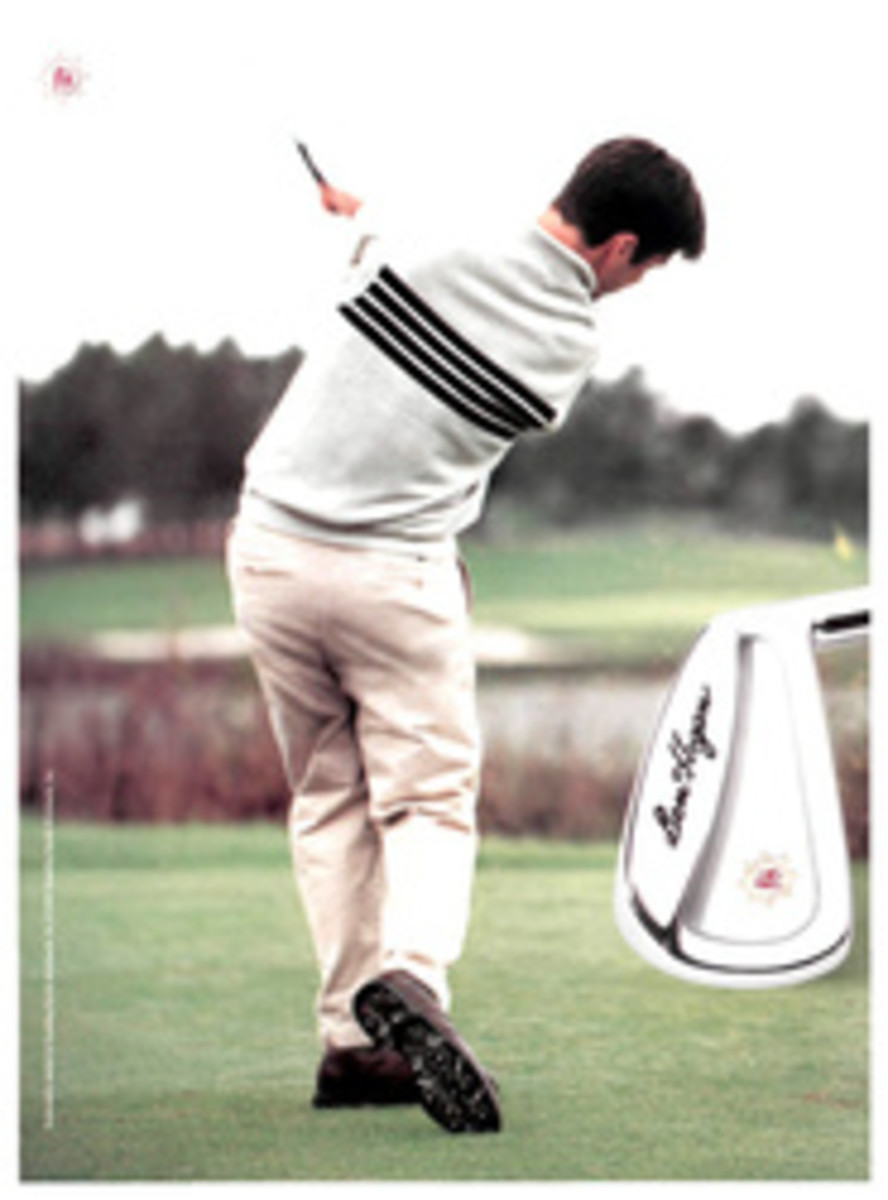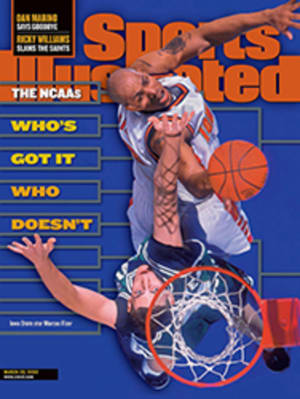
Miss Mary's History Lesson Mary Garber's inspiration during a 56-year sportswriting career has been Jackie Robinson
Mary Garber discovered her guardian angel in the summer of 1947
when she traveled to Brooklyn's Ebbets Field to watch Jackie
Robinson. At the time, Garber was a pioneering sportswriter in a
male domain, observing the first African-American to play major
league baseball. "Jackie became the most important influence in
my life," Garber says. "When people would step on me and hurt my
feelings, I would look at how he kept his mouth shut and did his
job as best he could with the belief that someday he would be
accepted."
In the year 2000 Garber is embarking on her seventh decade as a
sportswriter in Winston-Salem, N.C., having worked first at the
Twin-City Sentinel and now at the Winston-Salem Journal. The job
at the Sentinel was thrust upon her near the end of World War II
when a teenage boy who produced the sports page after school
enlisted in the Navy and there wasn't any man to take his place.
After the war Garber began to feel the sting of male chauvinism.
In that era the press box was off-limits to women, children and
pets. "Once, I was sent to cover a football game at Duke, but
they stuck me in the wives' box," Garber recalls. "All through
the game the wives blabbed and the kids screamed, and I thought I
would lose my mind."
Garber was one of the first women to cover the college football
and basketball beats, and there she was often stereotyped by her
gender. One day a high school basketball player tore his shorts
during a game, and the coach asked Garber to sew them up. Indiana
coach Bob Knight interrupted an NCAA tournament press conference
to ask Garber if his language was proper. A 1958 Sentinel article
reporting Garber's acceptance of a writing award said, "Miss
Garber has received nationwide publicity as one of the few
full-time female sportswriters. In addition, she bakes a mighty
fine cake."
Garber recalls accepting the award and the cooking compliment
with equanimity, willing to endure the discrimination because she
loved her job. She has interviewed famous sports figures from
Vince Lombardi to Chris Evert, from Satchel Paige to Brian
Piccolo. She is best known, however, for articles on less
prominent figures such as Drew Buie. An undersized running back
at a Winston-Salem high school in the early '60s, Buie had no
hope of attending college until Garber wrote that he possessed
the speed to play receiver. The endorsement earned Buie a
football scholarship to Division II Catawba. He eventually played
four NFL seasons before returning to North Carolina and becoming
a successful high school football coach.
The underdog reporter developed into a champion of the
overlooked, chronicling bench warmers and equipment managers as
well as stars, and filing many stories about African-American
athletes before they were widely accepted in the South. "Nobody
cared much about black players 40 years ago, but Miss Mary
covered a lot of things that weren't too popular," says former
Winston-Salem State basketball coach Clarence (Bighouse) Gaines.
"She went out of her way to see that everybody got a fair shake."
Garber says she received her most satisfying compliment while
covering a Soap Box Derby in the '50s. She overheard two
African-American boys in the bleachers as one kid said to the
other, "See that lady down there? That's Mary Garber. She doesn't
care who you are, but if you do something good, she'll write
about you."
The 83-year-old Garber, who has never married, is known to many
in her hometown as Miss Mary, and to almost everybody else as
"the white-haired little old lady in sneakers." One time a
handyman showed up to work on her house and asked, "Is this where
Mary Garber lives?" He then opened his wallet and proudly eased
out a yellowed newspaper clipping, a Garber article about the
handyman's winning a marbles tournament when he was 10 years old.
Garber shed her underdog status in the late 1970s when she was
elected president of the ACC Sportswriters Association, which had
denied her membership in the '50s. "I appreciate the honor," she
said at the podium. "More than anything else, it tells me that I
am accepted."
Admitting that she wishes her career were starting rather than
finishing in this generation, Garber encourages other female
sportswriters, and she's proud of the gradual proliferation of
women in her field. "Mary wrote about me when I was an
eight-year-old junior tennis player in Winston-Salem, and I've
been reading her byline ever since," says Ashley McGeachey, now
a sportswriter at the Philadelphia Inquirer. "She has become
both a mentor and a friend. I remember thinking, If this petite
lady in granny glasses can stand up to an angry coach, why can't
I?"
Garber has never considered retiring. In fact, when Bear Bryant
died in 1983, less than a month after retiring as Alabama's
football coach, Garber stopped by the office of Journal sports
editor Terry Oberle and said, "See what happens?" A few years
later, at age 70, Garber relinquished her full-time status at
the Journal, but at her "retirement" party on Sept. 30, 1986,
she ended her remarks by saying, "Thanks for the lovely dinner,
but I have to be at work early tomorrow morning, so let's wrap
this up."
Garber admits she has slowed down. Cataract surgery didn't
improve her eyesight, and her dachshund ate her hearing aid, yet
almost every morning she climbs four flights of stairs to her
desk at the Journal, where she produces three stories a week.
"She has won more writing awards than anybody else in our
department," Oberle says. "But overcoming prejudice and paving
the way for other women has been the greatest achievement of her
career."
In a 1977 column Garber mused on the legacy of Robinson: "Has it
really been thirty years since I sat in Ebbets Field and saw
Jackie Robinson play for the Brooklyn Dodgers? It is hard to
recall that the coming of Jackie would have caused such a stir.
So many things have changed that it is hard to remember just how
it was. Jackie is given credit for breaking the color line and
giving thousands of black athletes a chance to play. But he did
more. He made it possible for thousands of black athletes to fail
or succeed on their own merits."
Miss Mary could have been writing about "the white-haired little
old lady in sneakers."
COLOR PHOTO: BOB DONNAN Garber has ranged from high school to the pros (left, at the Redskins camp in 1960).
B/W PHOTO: NATE FINE [See caption above]
"Once, at a football game at Duke they stuck me in the wives'
box."

